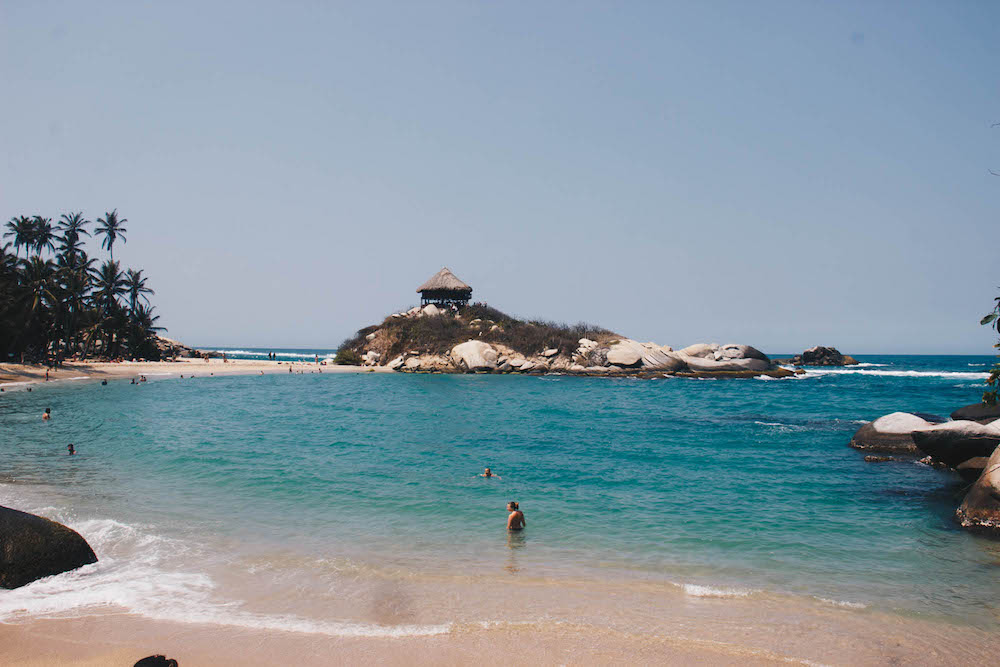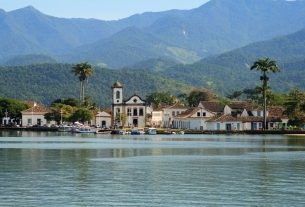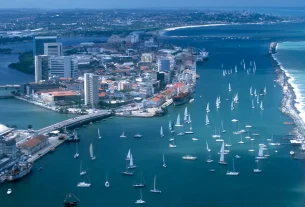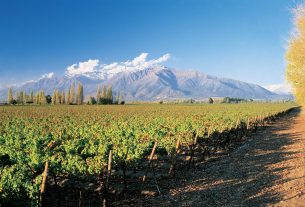In the past, the Sierra Nevada de Santa Marta was the center of the world of the Tayrona people. It was there that all the elements met: the mountain and the forest, the sea and the snow. Therefore, they built their small communities there with wooden houses, consecrated natural spaces as open-air temples and found ways to study the stars. With the arrival of the colonizers, these people were forced to seek refuge increasingly hidden in the depths of the mountain and this movement gave rise to four new peoples: the Kogi, Wiwa, Arhuacos and Kankuamo, who today have their home in the Tayrona National Park .
With 12 thousand hectares on land and 3 thousand at sea, this is one of the most important national parks in Colombia and also one of the most surprising. It was without a doubt my favorite place during my trip to South America and it’s very difficult to leave there without wanting to go back. Wild white sand beaches stretch behind the hills and dense tropical forest, which transforms the place into a refuge for both terrestrial and marine biodiversity with stunning landscapes. See now a complete guide to visiting Tayrona National Park.
Are you going to travel? Travel insurance is mandatory in dozens of countries and essential on vacation. Don’t be left unprotected in Colombia. See how to get insurance with the best cost/benefit for the country – and with a discount coupon.
How to get to Tayrona National Park
There are several ways to get to Parque Tayrona that vary in price and convenience:
- By public bus, leaving from Santa Marta or Palomino: This is the cheapest way and the most used by travelers heading to Tayrona. Buses leave every 30 minutes from the Santa Marta bus terminal, which is close to the market, and stop in front of the park entrance. The ticket costs 7,000 pesos (R$10) and the journey takes around an hour. If you are in Palomino or on a beach on the other side of the park, the same line runs in the opposite direction (towards Santa Marta) and also stops at the Tayrona entrance. The ticket price is calculated based on the distance and must be paid directly to the driver.
- Taxi: A taxi from Santa Marta to the Tayrona entrance should cost around 80,000 pesos (R$110). It might be a good idea if you travel in large groups, but taking the bus journey was very peaceful.
- Shutter de Santa Marta ou Taganga: Private vans pick you up at your hotel in Santa Marta or Taganga and drop you off at the park entrance. You can reserve a place at your hotel reception or at local agencies spread across both cities. The price varies, but can cost from 20,000 pesos (R$30) for Taganga and much more for Santa Marta.
- By boat, leaving Taganga: Perhaps the most fun way to travel to Tayrona. Buses leave the small beach in the center of the village at 9:30 am and 10:30 am. The price varies between 35,000 and 40,000 pesos and you can pay the captain directly or reserve a place at local agencies the day before. The boat leaves you in Cabo San Juan, a beautiful beach with the best economical accommodation options. By going this way, you avoid having to walk a 7.5 kilometer trail inside the park to Cabo. This is the best alternative for those who only want to spend the day in the park. Boats back to Taganga leave Cabo San Juan at 3:30 pm.
Since 2020, the Tayrona National Natural Park has closed three times for the #RespiraTayrona project. The initiative is to protect the ecosystem and the people who live there from the massive exploitation of tourism. Dates may vary each year. Find out before your trip.
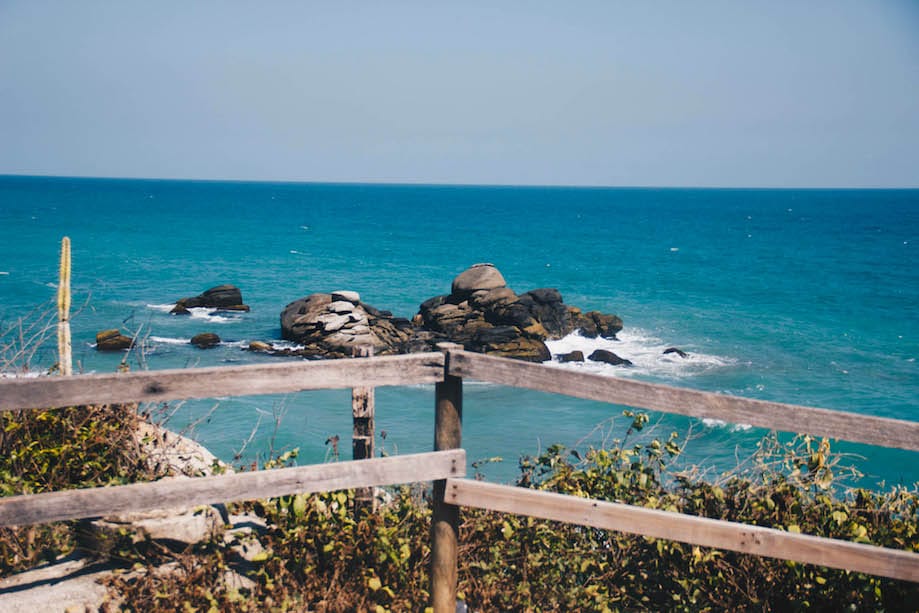
How much does it cost to visit Tayrona?
Entrance to Tayrona costs 44,500 pesos (R$60, 2018 price, students up to 25 years old pay half), regardless of how long you want to stay inside. This is well above other Colombian parks and attractions, and prices have been rising every year. Therefore, it is worth staying longer to compensate for the entrance fee.
When you buy your ticket at the park’s ticket office, you will receive a paper wristband (the kind used for nightclubs), which serves as a stay permit. From the entrance, you can walk or pay another 3000 pesos (R$4) for a van that drops you off at the beginning of the trail that will take you to the camping area. The first suitable place for bathers is Arrecifes, 3.5 kilometers away. The most popular is Cabo San Juan, 7.5 kilometers away.
Read too:
• What to do in Santa Marta
• What to do in Cartagena de Indias
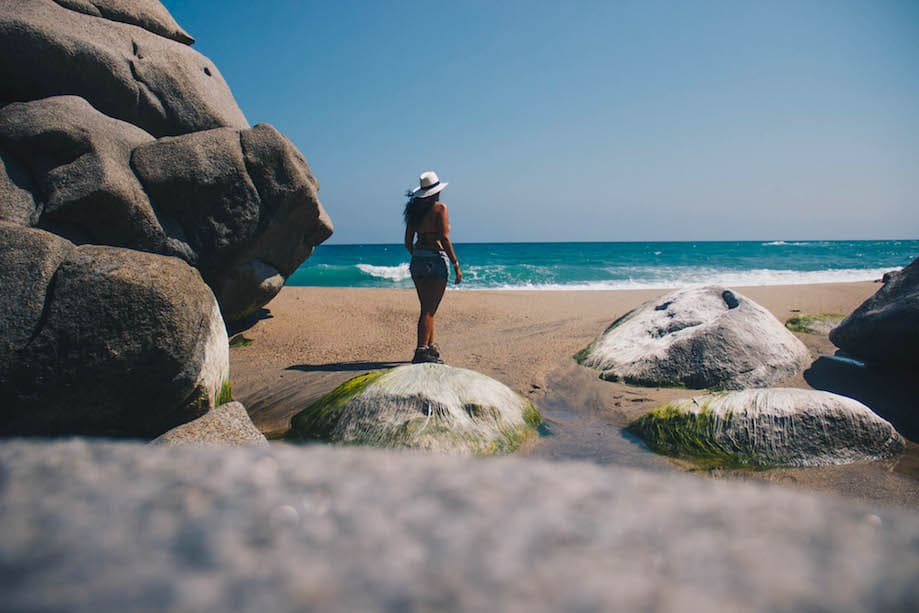
Important: You must present your passport or Brazilian ID to enter the park.
Renting a tent with a mattress is between 40,000 and 70,000 pesos per day (between R$55 and R$95). A small bottle of water inside the park costs 5,000 pesos (R$6.30). A can of local beer costs 6,000 pesos (R$8). A stuffed arepa or an empanada with a can of soda costs 11,000 pesos (R$15). A full meal in a restaurant costs from 25,000 pesos (R$35)
I spent between R$100 and R$150 per day at Tayrona, including all transport and entrance fees, the camping fee and a beer at the end of the day. I didn’t eat in the restaurants, I took some food to cook and bought empanadas and arepas from street vendors.
What to take to Tayrona?
No matter how many days you stay at Tayrona, take light. To get to the best accommodation locations, you will need to follow a trail of approximately 7.5 kilometers, carrying every kilo you carry and under the heat and humidity of the tropical forest.
Hotels in Santa Marta, Taganga and the region usually store guests’ luggage free of charge for the time they are staying at Tayrona. The two nights before entering the park, I stayed at Playa Los Angeles, a beachfront hostel/resort that is on the road to the park, a five-minute bus ride from the ticket office. I left my backpack there and, when I left, I just stopped by to pick it up before heading back to Santa Marta.
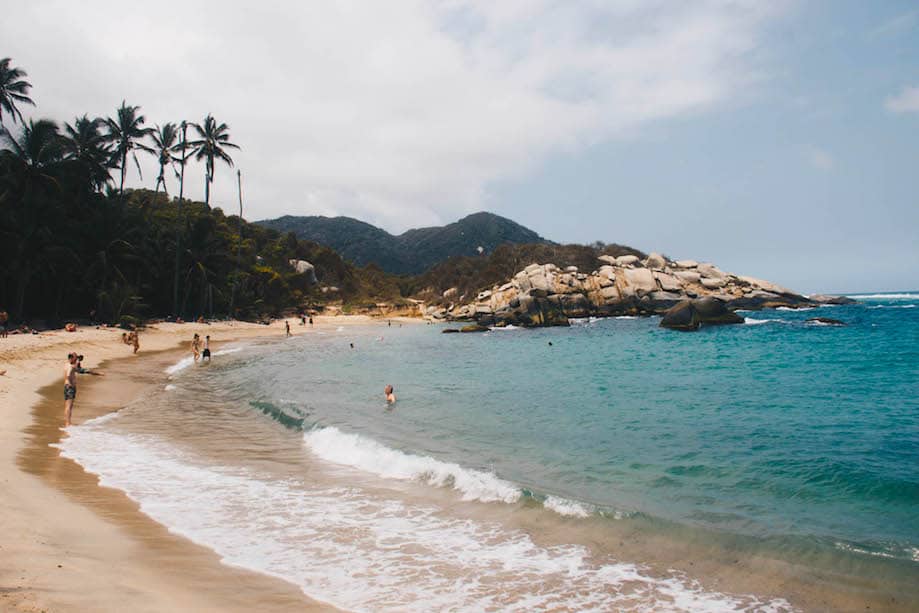
Here are some essential items for visiting Tayrona:
- Clothing: light fabrics, shorts, swimwear and sarong. Bring a light jacket as it can get cooler at night.
- Slipper
- Hiking boots or, if you don’t have any, comfortable sneakers for a lot of walking
- Sunscreen
- Repellent
- Sunglasses
- A flashlight (I used the one on my cell phone)
- Water – they sell it inside the park, but it is very expensive
- Snacks and food (you cannot cook at all campsites, see below)
Where to stay in Tayrona Park?
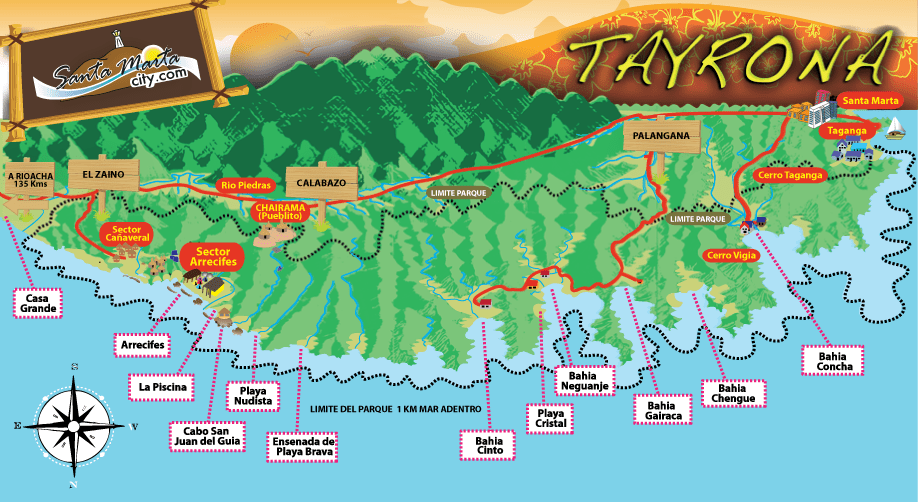
There are several accommodation options at Tayrona. The most popular is camping in Cape San Juan, both for the beautiful beach right in front – one of the best for swimming – and for the camping structure, which has a good restaurant in which you will probably have to eat your meals, as there is no kitchen there. This is also the one that requires the longest walk from the ticket office, 7.5 kilometers.
Another good option with beaches suitable for swimming and a little cheaper is camping. Reefs, 3.5 kilometers before Cabo. There is more than one camping option there and you will be five minutes from the nearest beach, which makes this a popular option for those who want to spend and walk less.
Castilletes they have the lowest prices, wifi, restaurant and also a rustic kitchen (you need to make your fire with wood available there), and it is the cheapest campsite among these and closest to the entrance, which eliminates the need to walk with things, but , although it faces a beautiful beach, it is far from swimming areas, as the sea there is quite rough. Therefore, you end up having to walk the trail every day if you want to bathe.
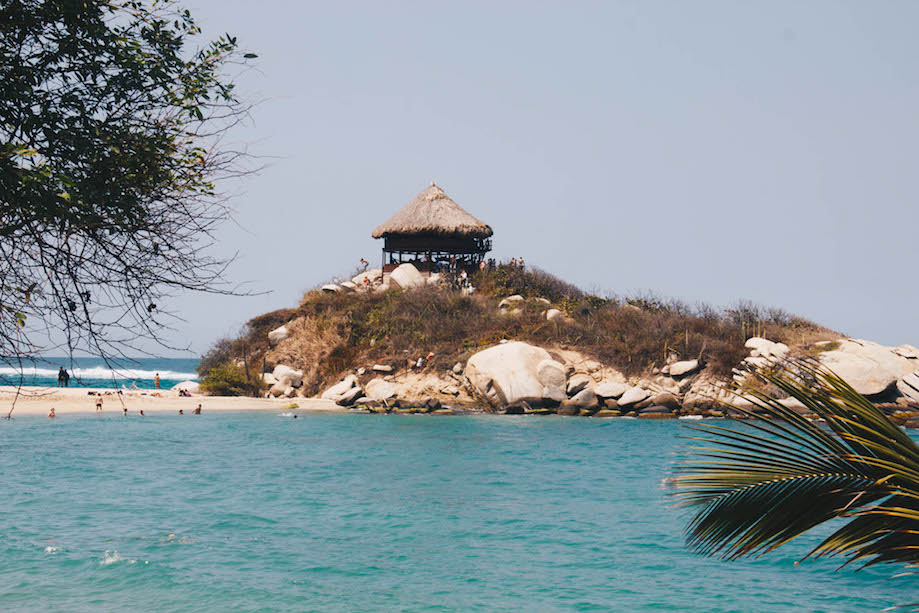
Cabo San Juan del Guía
All campsites have options for staying in outdoor hammocks, renting a tent (includes mattress and blanket), offering camping space (for those who bring their own equipment) and small chalets. Inside the park there is also hotels and eco-villages. If you are staying in hammocks or tents, be sure to bring a padlock and ask for a locker at your campsite.
Those arriving without accommodation can look for a small office on the side of the gate opposite the ticket office. They will tell you the accommodation options. You choose the one that suits you best and they call the hotels and campsites you prefer to make the reservation. You pay right there and, when you arrive at the campsite, they will be waiting for you. There are also some accommodation options on Booking.com, but pay attention when making your reservation, as most of the hotels listed there are not within the park’s boundaries, but in the surrounding area, such as Playa Los Angeles, which I mentioned. up there.
In addition to these, there are smaller, more rustic – and possibly cheaper – campsites scattered along the beaches and trails, which no one will tell you exist. The only way to find them is to look for them when you are inside the park.
What to do inside Tayrona National Park: beaches and activities
Most of the beaches within Tayrona Park are prohibited for swimming, as the waves and currents in the region are very strong. Please respect these warnings for your own safety. You wouldn’t be the first to drown on those beaches. Among the beaches where you can go for a swim, Cape San Juan is the main choice.
Arrecifes beaches are not suitable for swimming – it is even considered one of the most dangerous beaches within the park –, but they are very close neighbors to others that are. For example, The pool, which is right next door, and is so calm that it is the preferred option for families with children. Close to her, The Little Poola smaller version, which may or may not be open for swimming, depending on the tide (pay attention to the signs).
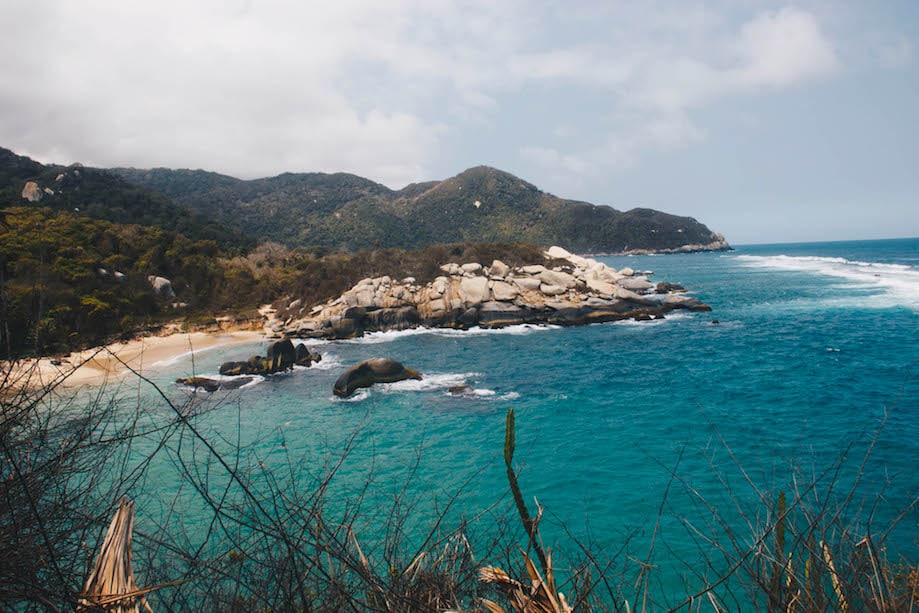
Following the sandy path west of Cabo, you arrive at a nudist area inside the park. This region is also only open for swimming when the tide is in a good mood.
In addition to the beaches, set aside a day to do some hike uphill to Pueblito, an ancient city built by the Tayrona that still preserves the traditional houses of these people, made of wood, and their places of worship. Leaving Cabo San Juan, it’s just two and a half kilometers, but the steepness of the terrain can make the journey a bit slow, so expect to walk for about an hour and a half. This place is still inhabited by a group of indigenous people, descendants of the Tayrona, so keep in mind that you are entering someone’s home.
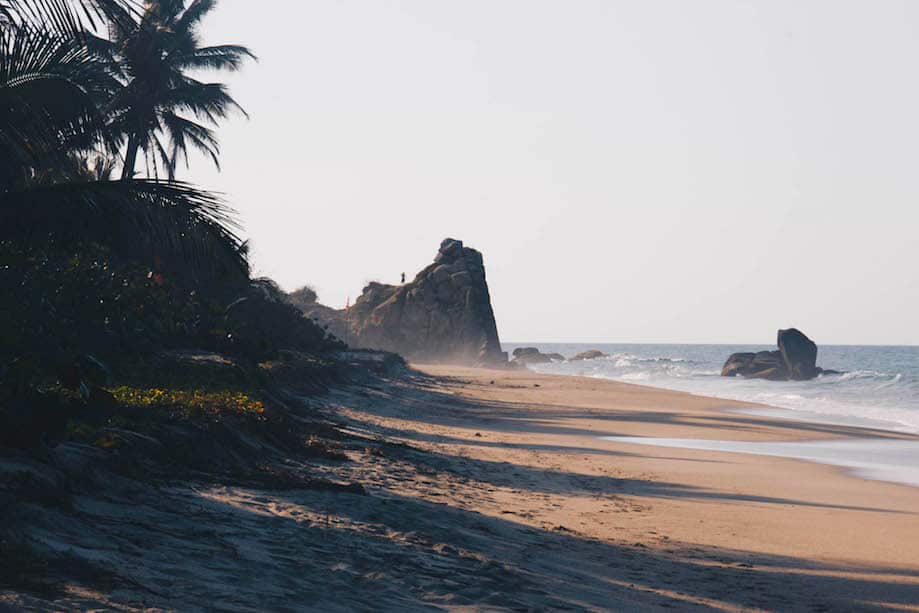
Nine Stones
Another famous trail in the park is the Nine Stones, a trail that leads to sacred sites of the Tayrona. The path is flat and very peaceful and, although the beaches there are dangerous, the view is tremendous. On the way, be sure to stop to read the plaques explaining the rituals to better understand the worldview of these ancient inhabitants.
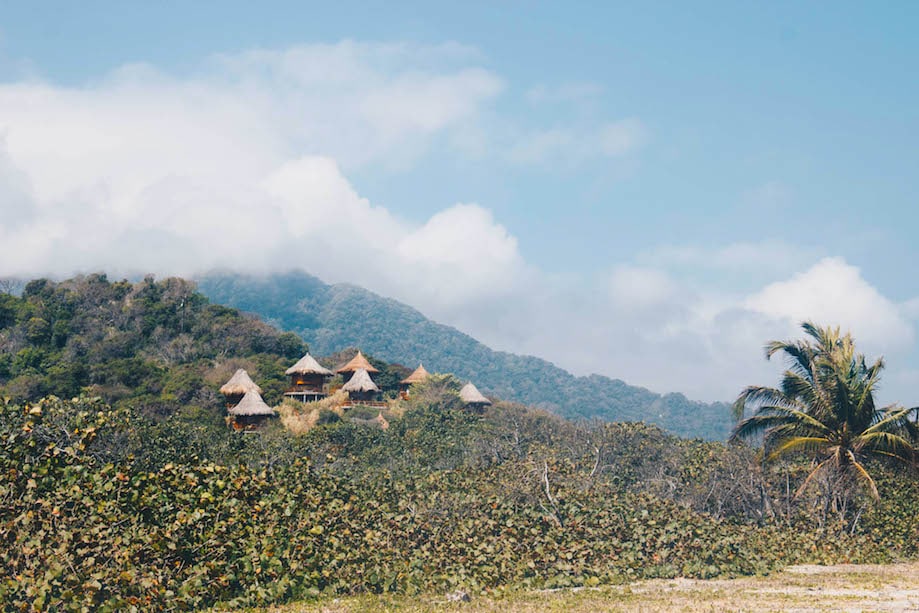
Tayrona style wooden houses
Tips to visit the Tayrona National Park
Prefer to visit the park in low season – from February to November – when the beaches and campsites will not be very crowded, but be aware that the park may close for a month at this time, for the purification of the indigenous people and the recovery of the ecosystem.
Since 2020, the closure has occurred twice a year. Find out about the dates before your trip.
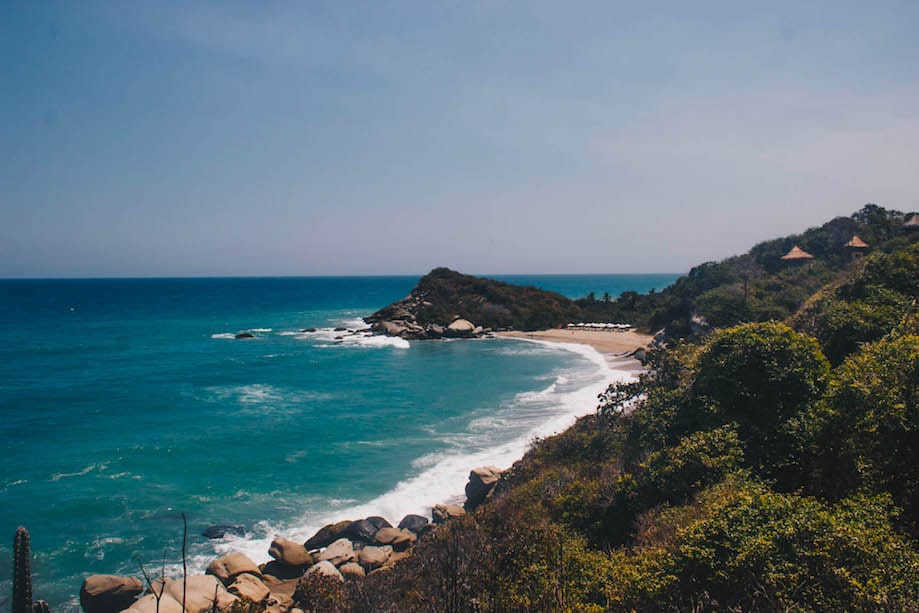
And remember: Tayrona is home to four indigenous cultures that have a deep relationship with the Sierra Nevada. Respect nature throughout the park and the spaces reserved for residents there. Don’t feed the wild animals you encounter along the way, collect all your trash and take good care of the spaces.
Sign up for our newsletter

Sign up for our newsletter and stay up to date with exclusive news
that can transform your routine!
Warning: Undefined array key "title" in /home/storelat/public_html/wp-content/plugins/link-whisper-premium/templates/frontend/related-posts.php on line 12
Warning: Undefined array key "title_tag" in /home/storelat/public_html/wp-content/plugins/link-whisper-premium/templates/frontend/related-posts.php on line 13

